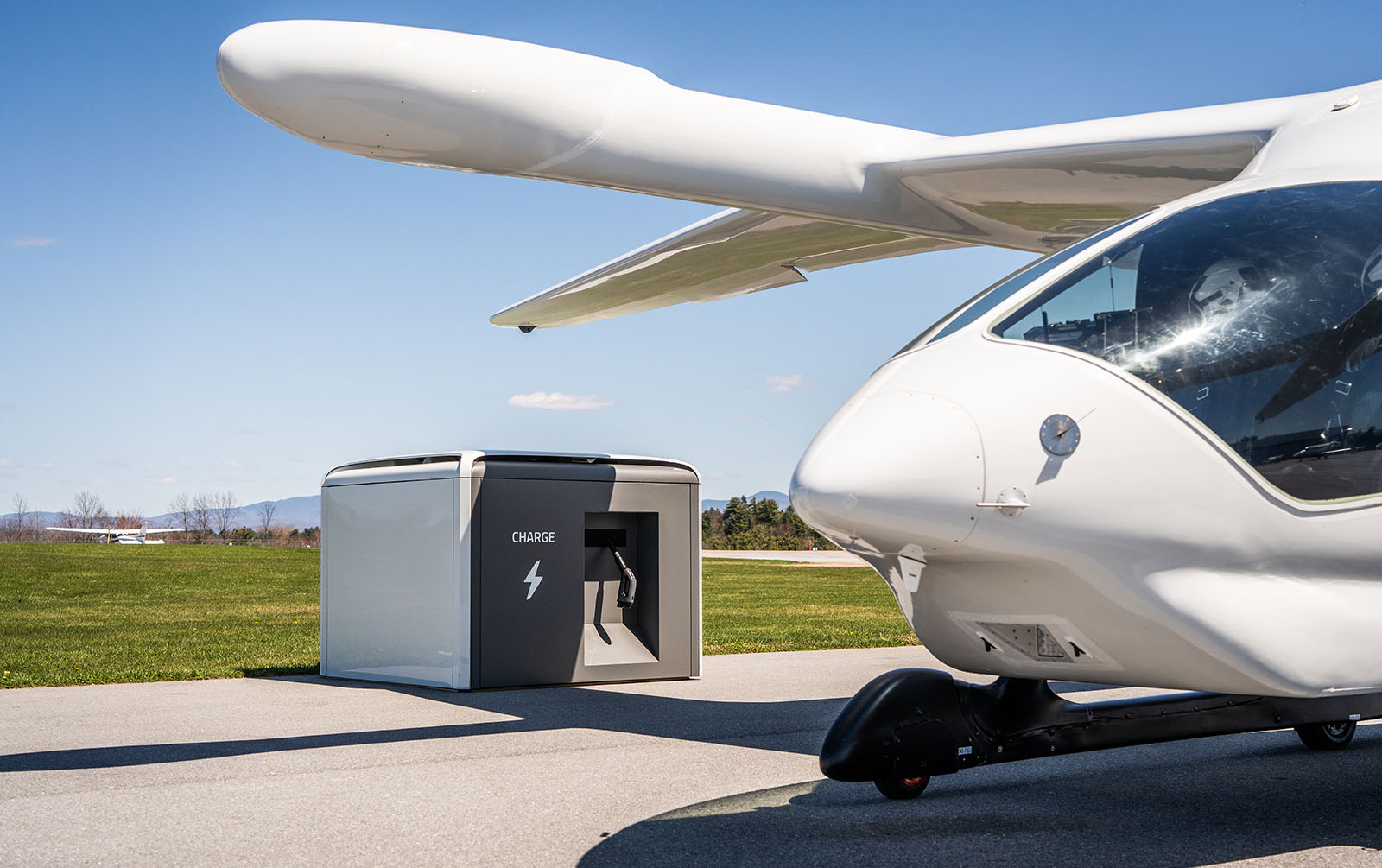Infra
Airport charging infrastructure seen as lagging air taxi designs

By Paul Brinkmann|June 21, 2024
Fast charging seen as tied to business success
Undergirding an ongoing federally funded study of the energy infrastructure at U.S. airports is concern that charging and other technologies might not be ready or in place for air taxis, electric fixed-wing aircraft and other advanced air mobility designs.
“Airports really gotta get going on this if they want to service these aircraft,” says Scott Cary, the sustainable aviation platform lead at the National Renewable Energy Laboratory. The federally funded research and development center in Colorado is assisting with NASA’s “Airports as Energy Nodes” study.
NASA and NREL believe airports will be the initial backbone of a charging network for electric air taxis and fixed-wing aircraft, whether such charging stations are in vertiports on the airport grounds, or in hangars and other locations.
Air taxi executives have said rapid charging will be vital so that each aircraft can be quickly readied for the next flight and enough passengers can be carried to keep fares reasonable.
“They want to turn that aircraft around as fast as possible,” Cary says. “And yet, if three aircraft plug in at the same time, it will drastically change not only charging time but also the electrical feed into that airport.”
Cary is among those involved in the ongoing “Airports as Energy Nodes” study, an effort to determine, among other things, “how airports can handle the energy needs” of advanced air mobility designs, including air taxis. For example, researchers have obtained electrical power usage data from Dallas Fort Worth International Airport and are applying machine learning software to predict how that demand might grow with the addition of electric aircraft, and also as rental car companies at the airport increase the percentage of electric vehicles in their fleets.
Some efforts are underway in the U.S. to improve the electric infrastructure. The FAA reauthorization act signed into law in May directs the agency to select 10 airports to receive funds for “modification of infrastructure to facilitate the delivery of power or services necessary for the use of electric aircraft.”
In the private sector, Avports, a Virginia company that operates over a dozen airports or terminals, has applied to work with the “Airports as Energy Nodes” study by providing data on electric power usage to in return receive insights and data, says Arturo García-Alonso, the company’s chief operating officer.
Avports needs to accurately anticipate electricity demands as it crafts a plan for construction of a new terminal at the Tweed-New Haven Regional Airport in Connecticut.
“We want to incentivize electric aviation,” García-Alonso tells me. “We don’t want to make it more difficult for an electric aircraft operator than we have to or overcharge for an electric aircraft operator.”
He notes that different charging methods have emerged in the electric aircraft industry, notably those planned by Joby Aviation of California and BETA Technologies of Vermont. But he believes those will be standardized soon.
“Because, at the end of the day, we are still agents of a public authority, and we need to make sure that we don’t have a system dedicated to just one or a few companies,” he says.
Cybersecurity on the mind
Charging batteries will require a data link to be established through the cable between the aircraft and the charging station, so that the charger can determine the battery’s charge level. To keep that link from becoming a cybersecurity risk, researchers believe it will be necessary to ensure that no avionics software updates can be sent through charging cables. Minimizing the data that can be shared will “simplify and avoid vulnerability points in the system,” Scott Cary of the federally funded National Renewable Energy Laboratory said in an interview.










